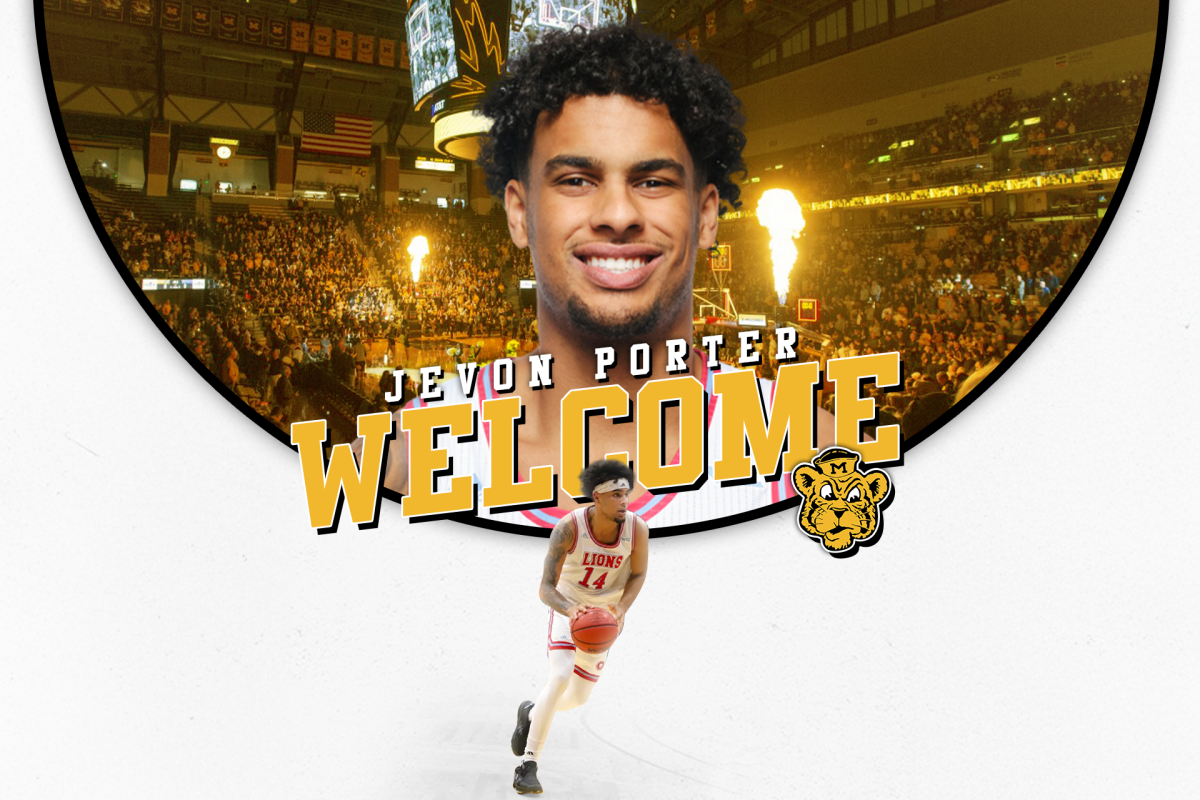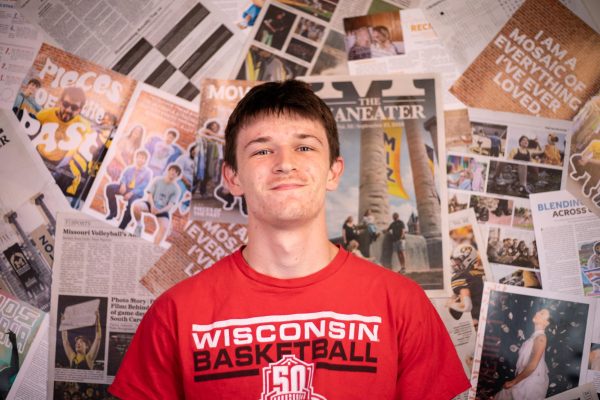Jevon Porter was an obvious target for the Missouri men’s basketball team this offseason. The Columbia native has strong ties to the program, with four of his seven siblings being Missouri alumni. On the court, he helps fill a positional void for the Tigers and provides much-needed size and floor spacing.
The 6-foot-11, 230-pound senior was the composite No.172-ranked player in the 2022 recruiting class. Porter did hold an offer from Missouri, but chose to start his career in a larger role with the Pepperdine Waves, where he averaged 13.8 points, 6.7 rebounds and 1.2 assists per game.
After two productive seasons with the Waves, Porter chose to transfer within the West Coast Conference to Loyola Marymount. Despite staying within the WCC, Porter didn’t see much improvement in production, recording 12.5 points, 7.2 rebounds and 1.9 assists per game. Porter chose to hit the transfer portal again, landing with Missouri after just one season with Loyola Marymount.
On offense, Porter is a stretch big. His game is somewhat simplistic with floor spacing holding the majority of his offensive value. With that said, his shooting touch has wavered as his college career has transpired. As a freshman, Porter shot 35.1% from beyond the arc, then dipped to 29.8% as a sophomore before jumping back up to 31.6% as a junior. A smaller and simpler offensive role will let Porter focus on his shot, potentially leading to a spike in efficiency.
Porter isn’t very advanced offensively outside of shooting. 43.7% of his shots as a junior were 3-point attempts. Additionally, Porter has shot just 49.7% on two-pointers in his collegiate career and has seen a steady decline in his 2-point percentage over the years. He is capable of punishing smaller defenders in the post and attacking wild closeouts — reflected by his career 29.3% free-throw rate. Along with that, Porter has a good understanding of when to pop or roll, making him a threat as a screener. However, Porter’s offensive potential is limited due to his poor shot creation and playmaking ability.
Porter has also shown inconsistencies on the defensive side of the ball. There are times when his length and mobility take over, allowing him to crowd space and provide value as a rim protector. However, there are also times Porter seems disinterested, leading to momentary lapses and poor defensive effort.
His career block rate of 3.4% and defensive box plus-minus of 0 are both concerningly low for a player his size. Porter also has poor footwork and footspeed, making it difficult for him to guard quicker players on the perimeter. He also displays some technical flaws when guarding pick-and-rolls and the post. However, those blemishes won’t be as apparent when he is sharing the floor with bigs Shawn Phillips Jr. and Trent Burns.
Porter provides much-needed floor spacing as a big, and at the very least, can fill minutes with the second unit. However, if Porter continues to show development as a creator and defender, he could make a strong case for a starting job next season.
Edited by Killian Wright | [email protected]
Copy edited by Ethan Palgon and Ava Mohror | [email protected]
Edited by Alex Gribb | [email protected]




